Thomas Ruff reimagines 1850s India and Burma at the V&A Photography Centre
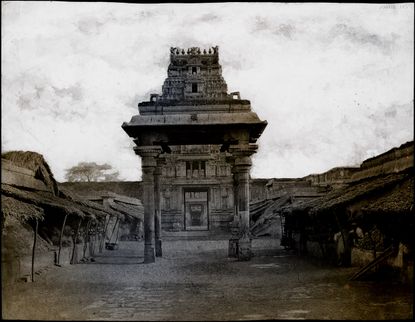
A major new body of work by German artist Thomas Ruff bridges digital manipulation with one of the earliest important achievements in analogue photography. Commissioned to celebrate the opening V&A’s brand new Photography Centre on 12 October, the series Ruff/Tripe reimagines a set of 1850s images of temples, palaces and monuments in India and Burma (now Myanmar) captured by British Army captain and photographer Linnaeus Tripe.
The Englishman joined the East India Company in 1838, moving to the south of India in 1840. However, Tripe only became interested in photography after relocating to Bangalore in 1854, following a four-year leave in England that was extended due to his poor health. Remarkably, he spent only two years making images in southeast Asia, but ten years printing them.
‘There’s a golden moment where [Tripe] made an incredible survey of all these places in India and Burma, some which had never been photographed before,’ says Martin Barnes, senior curator of photographs at the V&A. ‘It’s balancing between being a topographical military ordinance survey and admitting he was thrilled by the artistry of making these pictures.’

Tripe_09 (Amerapoora. My-au-dyk Kyoung), 2018, by Thomas Ruff, C-type print.
Ruff embarked on his own expeditions to the V&A’s viewing room, ultimately selecting 20 images from the 400-strong collection of Tripe paper negatives in the archive (ten works from the new series feature in the inaugural display). The negatives were photographed on a light-box at the London museum and delivered digitally to him (the artwork titles noticeably read like file names).
The artist began by layering Tripe’s sepia-toned negative with that of the positive albumen print on-screen, selectively teasing out areas of blue before enlarging the image to over three times its original size, and amplifying the structure of the paper and minute details hidden within it. There’s a quiet majesty to Ruff’s adaptation of Tripe’s images, as he pays homage to their scale, beauty and pictorial quality.
‘I did not want to compete with his printing. I really wanted to show the negative – or the state of the negative – 160 years later,’ says Ruff when we visit his Düsseldorf studio ahead of the opening. ‘All that was in the negatives is left and visible.’ Every scratch, speck of dust, water stain, mark of discolouration, and crease is shown in unapologetic glory in the 80 x 140cm prints, which Ruff – unlike Tripe – insisted on displaying them uncropped.
It’s the first time Ruff has ever worked with paper negatives and was intrigued by Tripe’s early ‘retouching’ processes, especially his hand-painting of the reverse of the negatives to add clouds or emphasise the ripples on water. (Early photographic emulsions were over-sensitive to blue and would not register clouds, so 19th century photographers would often retouch the sky to add interest to the picture).
Tripe’s photographs were the subject of an exhibition at the V&A in 2015, but seen in this ‘super-charged’ context the works take on a new lease of life. ‘Now the time is right to look at the aesthetics of the pictures and really rethink them as objects,’ says Barnes. ‘Thomas spans the world of analogue and digital, so his language of understanding the chemistry, the optics, and the ambition in making these pictures allows him to digitally draw [unique] things out of the pictures. Being able to translate them to the digital world allowed us to see what has never been revealed on those negatives.’
The Ruff/Tripe commission sits in poetic symmetry with the 150-odd cameras at the entrance of the revamped galleries – the installation, too, spans 160 years. ‘When most people think of photography, they think only of [the time] since Leica invented 35mm [in 1913]. Then it went on and film was exchanged to a digital sensor. That’s what photography is for them – this kind of straightforward photography,’ muses Ruff.
The artist continues, ‘I would say that’s only 5 per cent of the photographic world. If you go backwards, you’ll find every photographer who practiced photography in the first 50 years had to find their own technique. Everyone was a scientist, or an engineer. It was a really rich and wide world of photography.’ The new Photography Centre sets the perfect stage for Ruff’s latest series – a highly gratifying portal into the long history of the medium.

Tripe_03 (Mysore. Landscape with leafless tree and tank), 2018, by Thomas Ruff, C-type print.
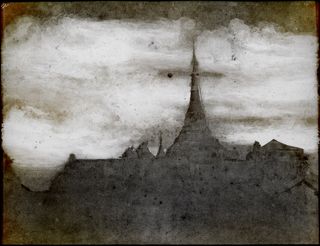
Tripe_05 (Rangoon. Signal Pagoda), 2018, by Thomas Ruff, C-type print.
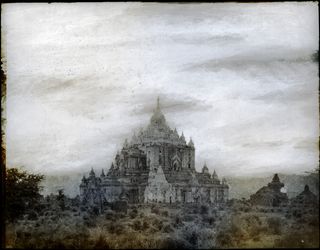
Tripe_08 (Pugahm Myo. Thapinyu Pagoda), 2018, by Thomas Ruff, C-type print.
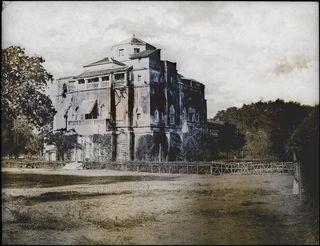
Tripe_13 (Madura. The Tunkum from east), 2018, by Thomas Ruff, C-type print.
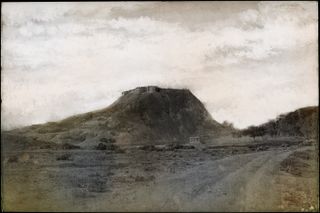
Tripe_14 (Namculdroog. Droog and tank), 2018, by Thomas Ruff, C-type print.
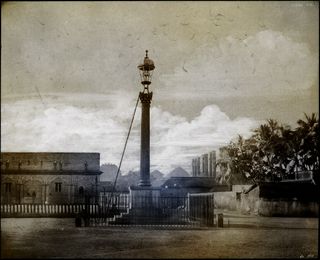
Tripe_15 (Madura. The Blackburn Testimonial), 2018, by Thomas Ruff, C-type print.
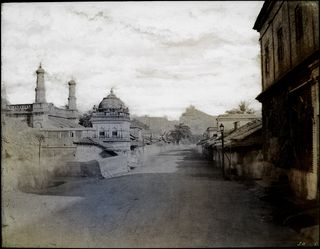
Tripe_17 (Trichinopoly. Street view, the rock in the distance), 2018, by Thomas Ruff, C-type print.
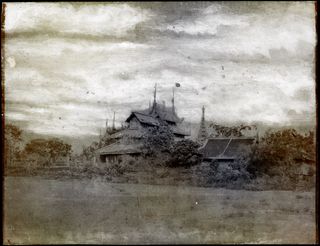
Tripe_01 (Amerapoora. Mohdee Kyoung), 2018, by Thomas Ruff, C-type print.
INFORMATION
The V&A Photography Centre is open to the public from 12 October. For more information, visit the V&A website
ADDRESS
Victoria and Albert Museum
Cromwell Road
London SW7 2RL
Wallpaper* Newsletter
Receive our daily digest of inspiration, escapism and design stories from around the world direct to your inbox
-
 The moments fashion met art at the 60th Venice Biennale
The moments fashion met art at the 60th Venice BiennaleThe best fashion moments at the 2024 Venice Biennale, with happenings from Dior, Golden Goose, Balenciaga, Burberry and more
By Jack Moss Published
-
 Crispin at Studio Voltaire, in Clapham, is a feast for all the senses
Crispin at Studio Voltaire, in Clapham, is a feast for all the sensesNew restaurant Crispin at Studio Voltaire is the latest opening from the brains behind Bistro Freddie and Bar Crispin, with interiors by Jermaine Gallagher
By Billie Brand Published
-
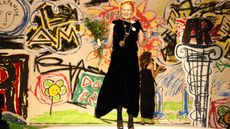 Vivienne Westwood’s personal wardrobe goes up for sale in landmark Christie’s auction
Vivienne Westwood’s personal wardrobe goes up for sale in landmark Christie’s auctionThe proceeds of ’Vivienne Westwood: The Personal Collection’, running this June, will go to the charitable causes she championed during her lifetime
By Jack Moss Published
-
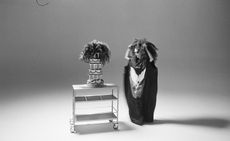 Kembra Pfahler revisits ‘The Manual of Action’ for CIRCA
Kembra Pfahler revisits ‘The Manual of Action’ for CIRCAArtist Kembra Pfahler will lead a series of classes in person and online, with a short film streamed from Piccadilly Circus in London, as well as in Berlin, Milan and Seoul, over three months until 30 June 2024
By Zoe Whitfield Published
-
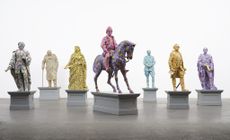 Yinka Shonibare considers the tangled relationship between Africa and Europe at Serpentine South
Yinka Shonibare considers the tangled relationship between Africa and Europe at Serpentine SouthYinka Shonibare‘s ‘Suspended States’ at Serpentine South, London, considers history, refuge and humanitarian support (until 1 September 2024)
By Tianna Williams Published
-
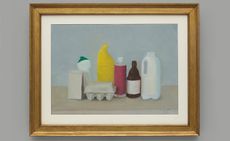 Gavin Turk subverts still-life painting and says: ‘We are what we throw away’
Gavin Turk subverts still-life painting and says: ‘We are what we throw away’Gavin Turk considers wasteful consumer culture in ‘The Conspiracy of Blindness’ at Ben Brown Fine Arts, London
By Rowland Bagnall Published
-
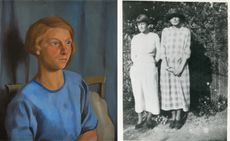 Dorothy Hepworth and Patricia Preece: Bloomsbury’s untold story
Dorothy Hepworth and Patricia Preece: Bloomsbury’s untold story‘Dorothy Hepworth and Patricia Preece: An Untold Story’ is a new exhibition at Charleston in Lewes, UK, that charts the duo's creative legacy
By Katie Tobin Published
-
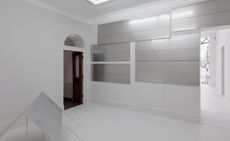 Don’t miss: Thea Djordjadze’s site-specific sculptures in London
Don’t miss: Thea Djordjadze’s site-specific sculptures in LondonThea Djordjadze’s ‘framing yours making mine’ at Sprüth Magers, London, is an exercise in restraint
By Hannah Silver Published
-
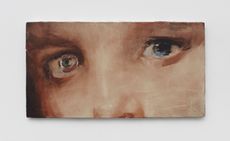 ‘Accordion Fields’ at Lisson Gallery unites painters inspired by London
‘Accordion Fields’ at Lisson Gallery unites painters inspired by London‘Accordian Fields’ at Lisson Gallery is a group show looking at painting linked to London
By Amah-Rose Abrams Published
-
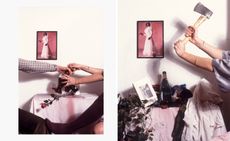 Fetishism, violence and desire: Alexis Hunter in London
Fetishism, violence and desire: Alexis Hunter in London‘Alexis Hunter: 10 Seconds’ at London's Richard Saltoun Gallery focuses on the artist’s work from the 1970s, disrupting sexual stereotypes
By Hannah Silver Published
-
 Wayne McGregor’s new work merges genetic code, AI and choreography
Wayne McGregor’s new work merges genetic code, AI and choreographyCompany Wayne McGregor has collaborated with Google Arts & Culture Lab on a series of works, ‘Autobiography (v95 and v96)’, at Sadler’s Wells (12 – 13 March 2024)
By Rachael Moloney Published